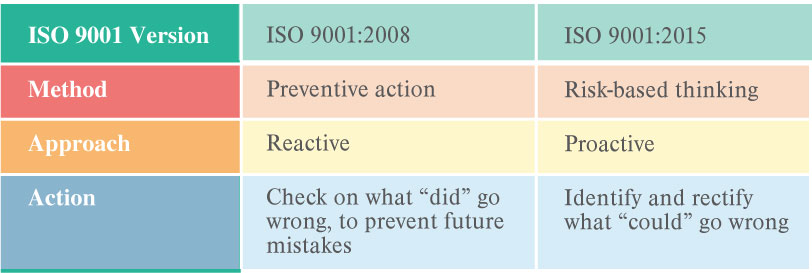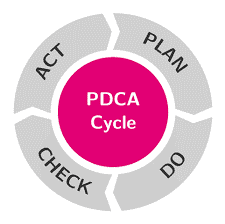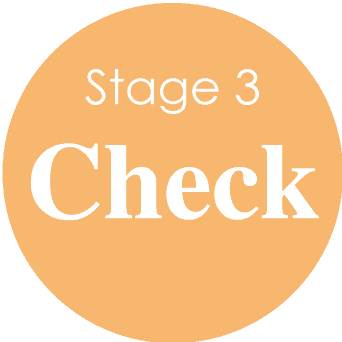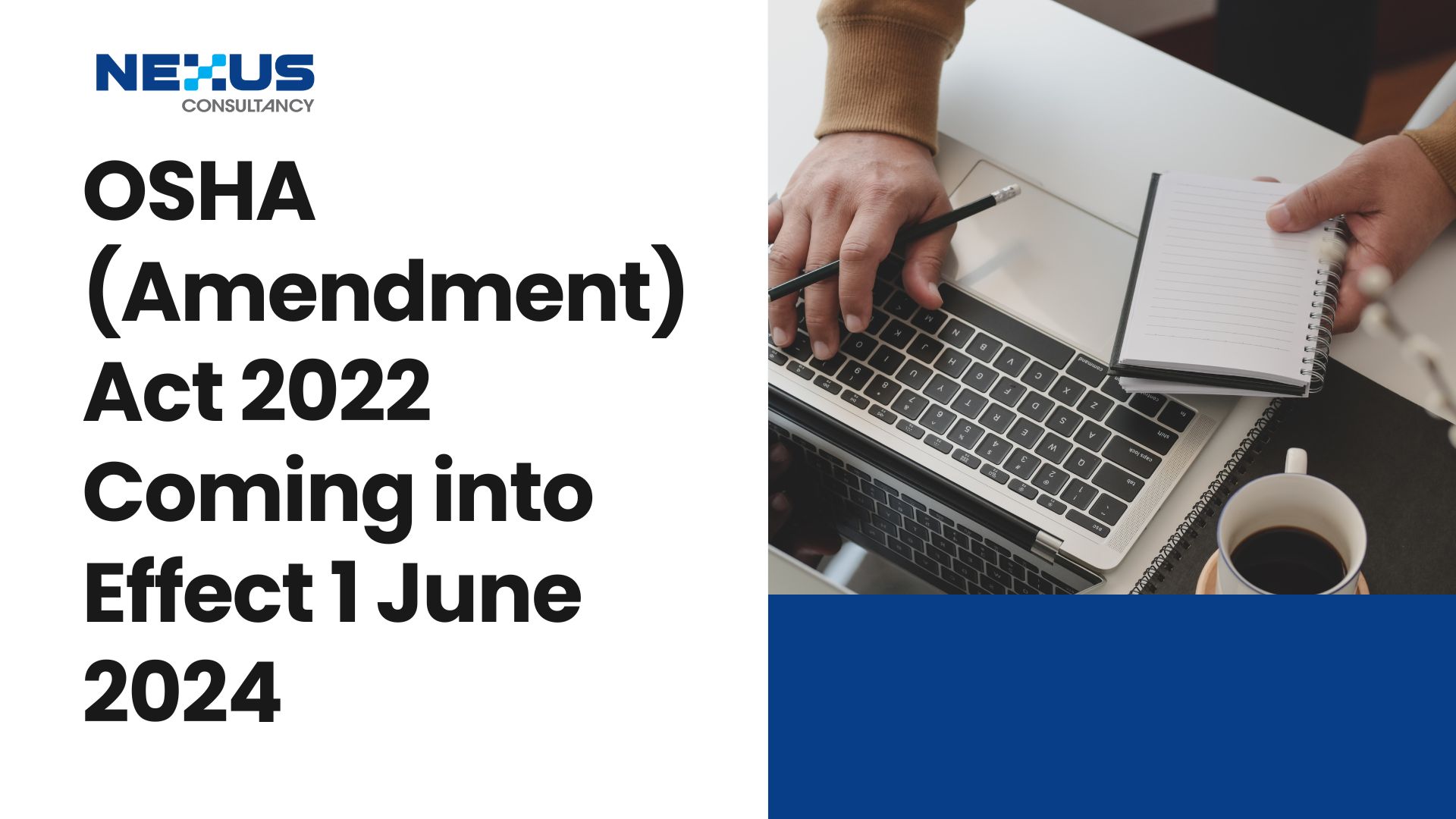Risk-Based Thinking
Author: Liza Soh ( Management Consultant)

What is risk?
The term “risk” is defined as a chance or possibility of danger, loss, injury or other. adverse consequences by Oxford Dictionary. Whilst ISO definition indicates that risk is the “effect of uncertainty on an expected result. The latest version of ISO 9001:2015 has included the component of risk-based thinking with people and leader involvement within an organisation. It replaced preventive action in earlier version of the standard.
What is risk-based thinking?
Risk-based thinking is an approach to continuous improvement. When using risk-based thinking, risk becomes an integral consideration where risk becomes proactive rather than in preventing or reducing undesired effects through early identification and action.
What are the differences between risk-based thinking and preventive action?

Why use risk-based thinking?
Risk-based thinking brings benefits as followed:
- improve governance
- establish a proactive culture of improvement
- assist with compliance
- assure consistency of quality of products and services
- improve customer confidence and satisfaction
How to integrate risk-based thinking in ISO 9001?
PDCA cycle focus on the utilization of risk-based thinking, to leverage on opportunities and preventing undesirable results. PDCA is an acronym for Plan, Do, Check, and Act.of health and safety.
The PDCA cycle can be briefly described as follows:
- To establish the objectives of the system and its processes
- To arrange the resources needed to achieve the objectives, aligned with customers’ requirements and organisation’s policies
- To identify and address risks and opportunities
To implement what was planned in previous stage
- To monitor and measure (if applicable) processes outcome
- To report the results
To take actions to improve the performance of processes
Reference
https://www.iso.org/
How can Nexus Help?
We can provide:
- Awareness training to help you understand the requirements of ISO 45001:2018, Annex SL, Risk Based Thinking and Empowering Leadership.
- A gap analysis, which can be used to highlight the changes that will need to be made for transition from OHSAS 18001 to ISO 45001:2018 certification.
- Guidance to help you with the transition from OHSAS 18001 to ISO 45001:2018 certification.
For further information, please call:
+603 7728 1637
OR











